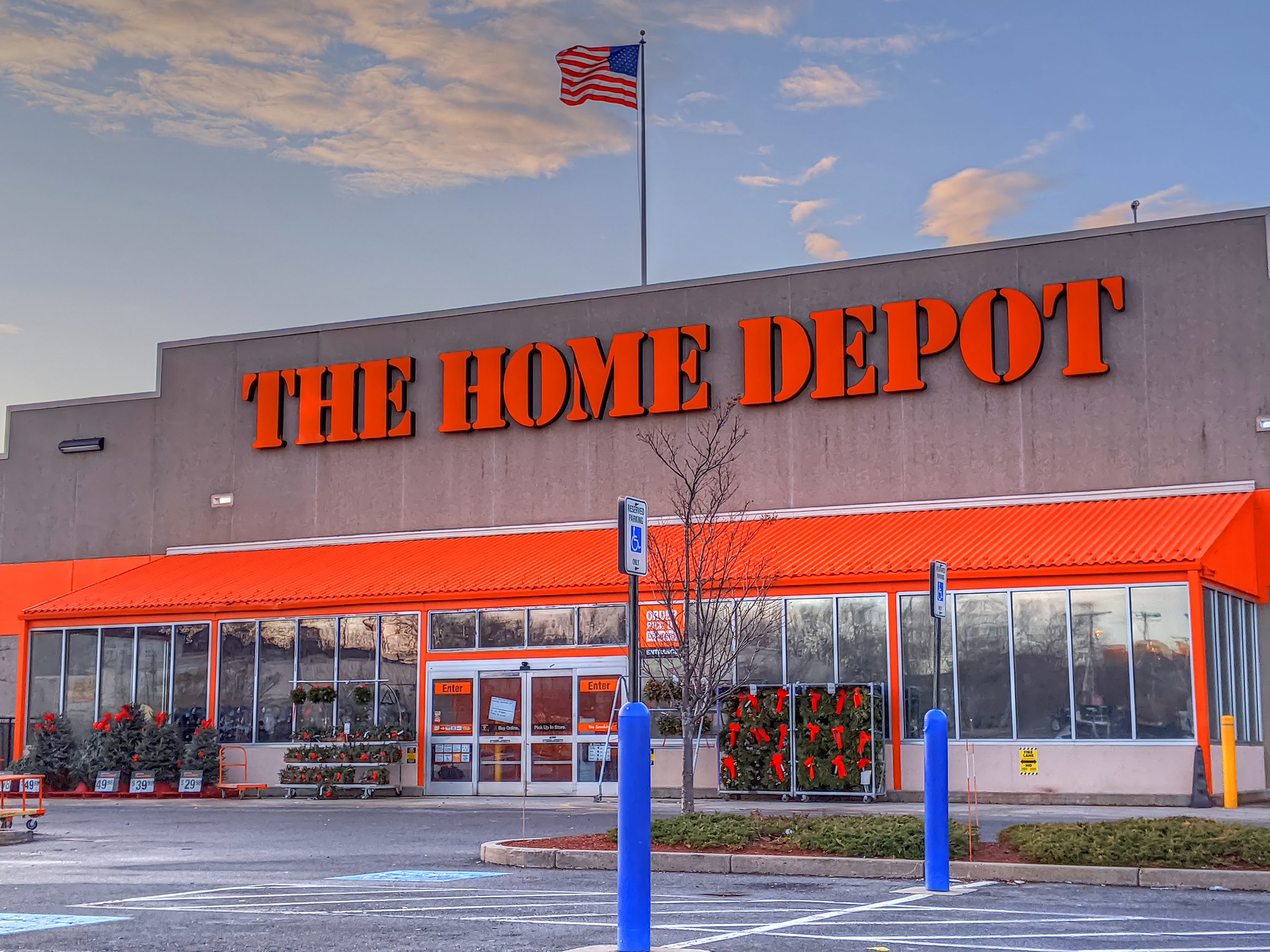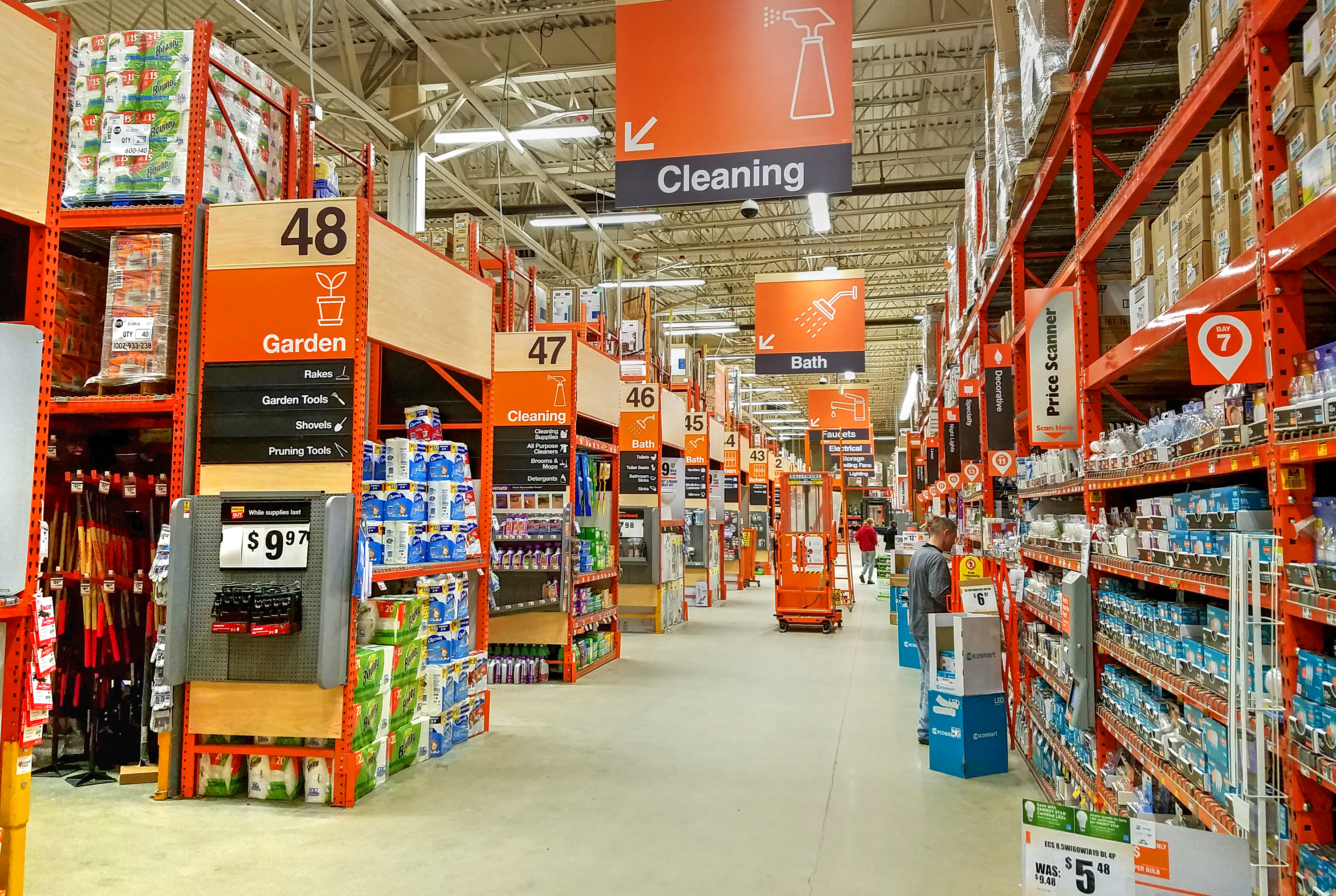Home Depot is continuing its hot streak with yet another banger of a quarter—Q3 sales came in at $36.8 billion, easily beating Wall Street forecasts. Their year-over-year sales continue to climb, increasing 5.5% in the US and 6.1% globally; this year alone, their stock has soared nearly 50%, currently trading at a record high.
And, perhaps most interestingly, their total Q3 sales are more than 30% higher than they were in Q3 of 2019.
Think about that.
They are doing better now than they were this time last year—great, a lot of companies are. But they are also doing better now than they were before the pandemic began. That kind of statistic merits some exploration.
That’ why we are putting in the retail market research to understand the ways the pandemic accelerated and perhaps altered Home Depot’s course as well as their forthcoming challenges. In a world of seemingly permanent pandemic and a housing market on steroids, a very specific set of conditions has emerged, one that keeps everything coming up Home Depot.
How the Housing Market Propels Home Improvement

So, how have the pandemic and its consequences helped to fortify Home Depot? There are several factors at play here, some more obvious than others.
Simple stuff first: the pandemic brought a lockdown, wherein people were literally cloistered in their homes. When you stare at the walls all day, you are likelier to decide those walls need to be painted. Delayed home improvement projects became a top priority because spending all day at home leads to thoughts about improving said home.
Just as people were fixating on improvement projects, their generous Uncle Sam came along with several stimulus payments, helping homeowners feel a little heavier in their pockets as they embarked on improvement adventures. This says nothing of the savings white collar Americans accrued during the earlier stages of the pandemic.
So, that’s the simple stuff, but then there is the housing market.
We’ve written extensively about the imbalanced housing market, where demand outpaces supply and homeowners continue to see property values increase. In fact, the S&P Corelogic Case-Shiller Index showed that average home prices gained 19.7% year-over-year in July.
This increase, combined with low interest rates, propels people to refinance, pulling equity out of their home. According to Black Knight, today’s average homeowner has over $150,000 in home equity to finance lines of credit…and guess where a lot of that money is going.
Refinances often finance larger home improvement projects, which overtime stand to increase the property value further. This is how it has been for ages—homeowners increase their home value through projects they fund by refinancing their mortgages, and then can again refinance as their home value increases.

The last two years have seen an unprecedented surge in refinances, which not only propel do-it-yourself projects but also professionally contracted ones. Here, it is important to remember that, while many of us are familiar with Home Depot as a one-stop DIY home-improvement center, a good chunk of its business comes from contractors (roughly 45%).
Home improvements, no matter who is doing them, are good for Home Depot.
Will Interest in Home Improvement Fade with the Pandemic?
The pandemic undisputedly boosted Home Depot, yet there is now reason to wonder if the COVID era temporarily accelerated traffic to Home Depot or if it gave Home Depot the conditions in which to permanently level up.
As consumer demand stays steady despite changes in conditions on the ground, the latter appears more and more likely. Perhaps the pandemic initiated a sustained increase in home-improvement demand among consumers, rather than briefly accelerating it.
There was a time Home Depot’s rise seemed like a temporary blip, mostly for the aforementioned reasons (what else were people going to do but focus on home improvement?!). But perhaps the pandemic changed something culturally and socially within us, perhaps it reminded us that homes are our most valuable asset.
Whatever happened, as Home Depot’s CEO Craig Menear dryly noted, "elevated home improvement demand has persisted."

Analyst John San Marco also believes this is the case. “Each quarter that passes in the Covid era is further evidence that Covid has been a step function higher for the business, rather than a pull forward of demand,” San Marco recently told the Wall Street Journal.
“If that was ever going to be tested, it was going to be now when commodity costs are swinging pretty violently,” he said.
When Supply Chains are Breaking, Make Your Own
Of course, retailers can’t sell anything if their supply chains are broken, and Home Depot has not been immune to the recent crunch.
They’re doing what a lot of big box retailers are doing, favoring a flexible inventory approach that keeps cost down and stock up. This may mean turning to different brands than their typical offerings, showing they are not entirely immune to supply chain issues, but this is a small concession.
They’re also thinking big, however. Like other retailers such as Costco and Walmart, Home Depot has started chartering their own container ships to get around supply chain disruptions. It’s costly, of course, but that’s kind of the point: this is not an option available to many retailers.
It allows Home Depot to sidestep bottlenecks at ports like Long Beach by routing to other, less congested ones like Oakland or Portland, where they can then arrange for transportation to their stores and distribution centers. By not sharing cargo space with other companies, Home Depot can route these chartered ships wherever they like to ensure shelves stay stocked.

It seems to be working. Currently, Home Depot’s inventory levels are 40% higher than they were this time last year. For all the talk we’ve heard about supply chain challenges, Home Depot has found a way to greatly increase its inventory since last year’s locked down holiday season.
Retail Market Research: A Secure Home
Just like any other retailer, Home Depot can expect some obstacles on the horizon—competition, inflation, supply chain and transportation woes, and increased operational costs. Yet, retail market research says are in a better position than most other retailers to address these challenges.
First, the size and specialization of their goods makes them less vulnerable to competition from e-commerce giants and upstarts. Usually, when people make a trip to Home Depot, they ask that one friend with a truck (everybody has one!) to help them drive stuff home. The same is true with delivery, where the cost of shipping is nearly prohibitive.
Second, the size and specialization of Home Depot itself gives it a great deal of forward momentum. It is the biggest home improvement store in the world. Period. That distinction brings significant bargaining power with suppliers and vendors, advertisers, and even landlords. With such bargaining power, Home Depot can keep costs low.
None of this means that Home Depot is bulletproof, of course. With its fortunes so tied to the housing market, a crash in home prices and a hike in interest rates could significantly rock Home Depot to its foundation. In such an extreme scenario, as housing prices fell homeowners would delay improvement projects, home construction would slow, and Home Depot would be selling ice cubes in a snowstorm.
It is testimony to the company’s strength that it would take such an epic national economic meltdown to raze it. Barring such a calamity, we like their chances.


